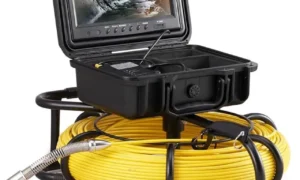Ensuring the safety and comfort of your baby is a top priority for any parent, and selecting the right crib mattress plays a crucial role in this. Many parents often wonder, “Are crib mattresses safe?” The answer is yes, as long as they adhere to certain safety standards and guidelines. In this article, we’ll delve into the key aspects of crib mattress safety and provide essential information to help you make an informed decision. For more details on choosing the best crib mattress, visit this comprehensive guide.
Safety Standards and Regulations
In the United States, crib mattresses must comply with safety standards established by the Consumer Product Safety Commission (CPSC). These regulations are designed to minimize the risk of suffocation, entrapment, and Sudden Infant Death Syndrome (SIDS). Key safety standards include:
- Size and Fit: Crib mattresses should fit snugly within the crib, leaving no gaps larger than two fingers between the mattress and crib frame.
- Firmness: A firm sleeping surface is essential to prevent suffocation. The mattress should not conform to the shape of the baby’s head or body.
- Materials: Mattresses should be made from non-toxic materials and free from harmful chemicals such as phthalates, lead, and formaldehyde.
The Importance of Firmness
One of the most critical factors in crib mattress safety is firmness. A firm mattress supports your baby’s developing bones and reduces the risk of suffocation. To test the firmness of a crib mattress, press on the center and the edges. The mattress should quickly regain its shape and not leave an indentation. Avoid soft, plush mattresses, as they can create dangerous indentations that increase the risk of SIDS.
Breathability and Ventilation
Breathable crib mattresses enhance safety by promoting airflow and reducing the risk of overheating, which has been linked to an increased risk of SIDS. Look for mattresses with breathable materials or those designed with ventilation channels that allow air to circulate freely. This feature keeps your baby cool and comfortable and provides an added layer of safety.
Waterproof and Easy to Clean
Crib mattresses should be waterproof or come with a waterproof cover to protect against spills and accidents. A waterproof mattress prevents mold, mildew, and bacteria from accumulating, which can pose health risks to your baby. Additionally, a washable and easy-to-clean surface ensures that you can maintain a hygienic sleeping environment for your little one.
Non-Toxic Materials
Ensure that the crib mattress is made from non-toxic materials. Organic mattresses, which are free from harmful chemicals, are an excellent choice for parents concerned about exposure to toxins. Certifications such as GREENGUARD Gold and CertiPUR-US indicate that the mattress has been tested for chemical emissions and meets stringent safety standards.
For a detailed review of the safest crib mattresses available, check out these crib mattress reviews.
Regular Inspection and Maintenance
Regularly inspecting and maintaining your crib mattress is essential for long-term safety. Check for signs of wear and tear, such as sagging or cracks, and replace the mattress if necessary. Ensure that the mattress cover is intact and provides a snug fit to prevent any hazards.
Conclusion
Crib mattresses are safe when they meet established safety standards and guidelines. By choosing a firm, breathable, and non-toxic mattress, you can create a safe and comfortable sleeping environment for your baby. Regular maintenance and careful inspection further ensure that the mattress remains in optimal condition. For more detailed information on selecting the safest crib mattress, visit this comprehensive guide.



































